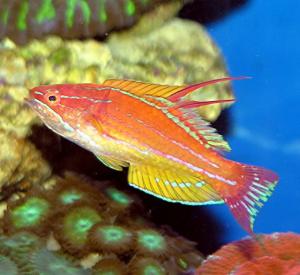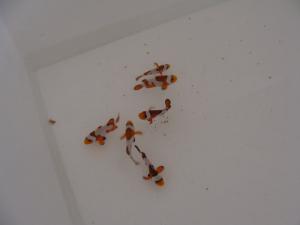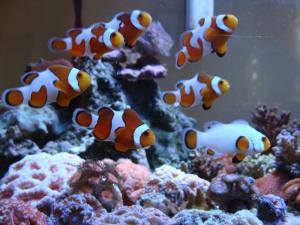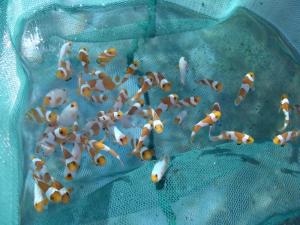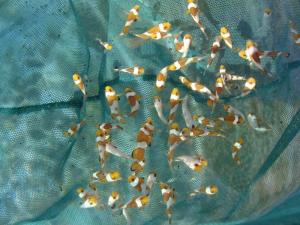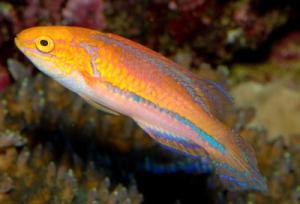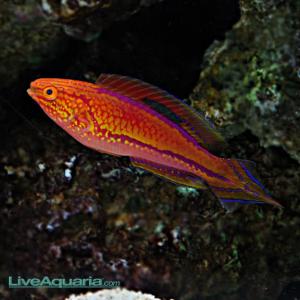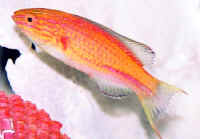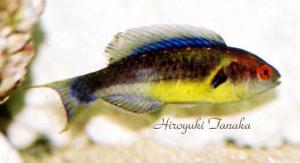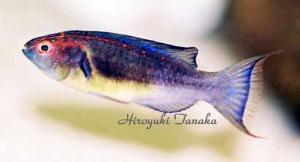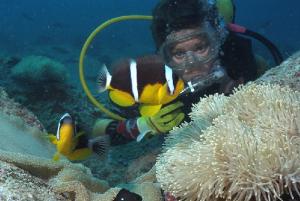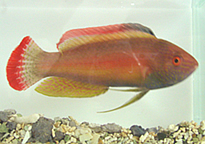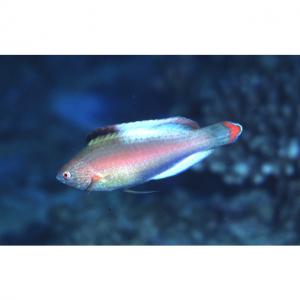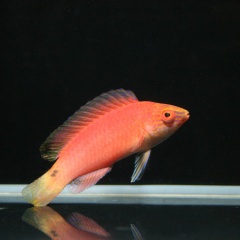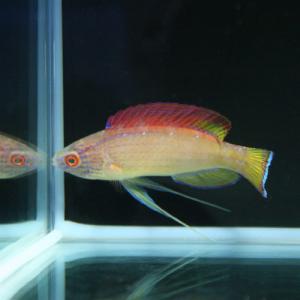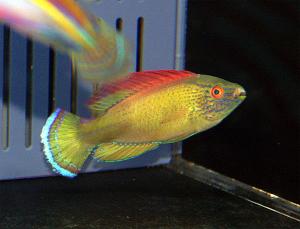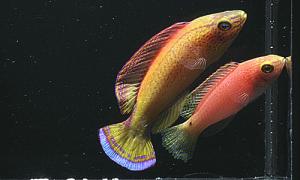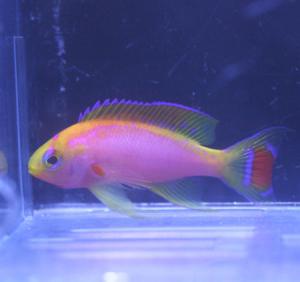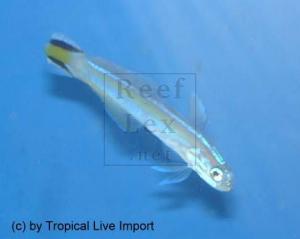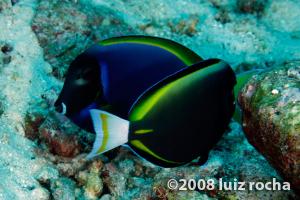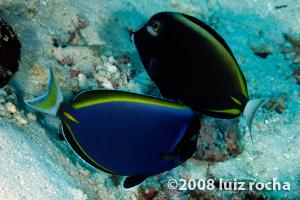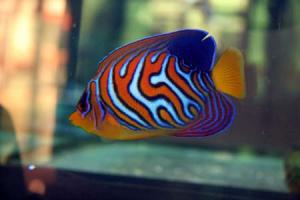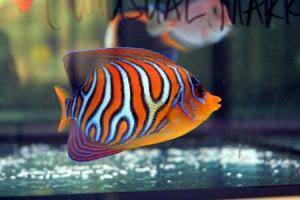-
Posts
5,302 -
Joined
-
Last visited
-
Days Won
29
Content Type
Profiles
Forums
Gallery
Everything posted by Digiman
-

OMG! Look at these hybrids and rare fishes!
Digiman replied to Digiman's topic in FOWLR (Fish-only with Live-rock)
-

great recovery from white spots
Digiman replied to lotsofloo's topic in Disease treatment/parasite/pest control
Guess its not the water but the ick that killed your fishes. As i mentioned before, losing fishes to ick can be disheartening, but this is definitely one thing u've to face and overcome in this hobby. -
Pls these are not mine, i dun breed fishes, not my interest. There're two v pro breeder here though, fuel and marinebetta, look out for what they hav to offer and its jux a matter of time they start producing snowflakes and picasso.
-

OMG! Look at these hybrids and rare fishes!
Digiman replied to Digiman's topic in FOWLR (Fish-only with Live-rock)
Prognathode Brasiliensis (Brazil) -
-
Obtainable here means the species are not protected and there's no restrictions on their collection or watsoever, plus there's also regular collection and import from their habitat. But we're not seeing the fishes because they are v rare and deepwater in their habitat and any caught will go directly to high paying countries like Japan. So good luck on seeing them in Singapore. Yes, and i believe most of us here do that and still suffer occasional loss because fairy wrasses are a gamble when bought during shipment day. Some will not take shipping well and have internal parasites. The ones that overcome the shipping stress will become v hardy eventually. I do not practise freshwater dip because always have v bad experience with that, it stress and weakens the fish further.
-
Following is a yet to be properly named wrasse from cebu philippines, pintail or splendid fairy wrasse (Cirrhilabrus cf. lanceolatus). It is in fact most similar to C.Lunatus (and not c.lanceolatus) except without the lunate caudal fin of the lunatus wrasse. This fish is actually more obtainable but expensive, coming from cebu shipments. One of the most beautiful wrasse with a rhomboid tail.
-
C.Lunatus (normally recorded in Japan, and v rarely in sulawesi) has many colour variants. Shown below are other color variants, from sulawesi. It's considered one of five hardest to obtain (but obtainable) fairy wrasses. The other four are C. majorie (Fiji), C. blatteus (Red Sea), C. earlei (Palau) and C. sanguineus (Mauritius).
-
Yes both Iwarna and Ah Beng has brought in Cebu pylei in their philippines shipment before. Ah Beng side seen twice, but no alpha males and look a bit dull.
-
-
Cirrhilabrus rubrimarginatus (Red-margin wrasse) medium-larged size. slight aggressive. wide range: fiji, vanuatu, indonesia. rather expensive from vanuatu ($150) and cheap from indo. Pic shown alpha male, and flashing.
-
Cirrhilabrus Pylei (Blue margin wrasse / Vanuatu Pylei wrasse) Commonly imported from Vanuatu (Iwarna). Middle-sized and peaceful. Rather expensive, $150. Pic below show female, male, male flashing.
-
If nitrate is too high, no. There are a lot of articles on the net about clams care, one of it is here. Clams need high calcium level and strong lighting. Temperature is not a major concern. Nitrate maintain at 20ppm or lower is safe, anyway clams are known to filter water and reduce over nitrate level. Read up more on the net and u'll learn clams are not recommended for beginner because of their high requirement for lights and calcium.
-

great recovery from white spots
Digiman replied to lotsofloo's topic in Disease treatment/parasite/pest control
In the day, the fish is more active and is fighting off the white spots. During the night when it enters into sleep and resting, white spots will take advantage and infect the fish again that's why when u and your fish wake up in the morning to find yourself (i mean your fish) covered in white spots. Anyway ick is still present in your tank but in an amount that your coral beauty is able to defend itself against. The problem will come when u add new fishes now, weaker new introductions will succumb to ick invasion and ick reproduction will shoot up exponentially causing an outbreak beyond the threshold of all livestocks and wipe out the whole tank. So u need to read up on how to rid off your tank of ick and qt your new fishes and learn how to maintain good water condition so that ick will never get the upper hand in your tank. P.S. Ick and velvet is the biggest downer of this hobby and we all have to face it at some point of time. Good luck. -
Salifert Test Kits can be found in most LFS. For a price indication, pls refer to FreshnMarine and ReefDepot.
-

OMG! Look at these hybrids and rare fishes!
Digiman replied to Digiman's topic in FOWLR (Fish-only with Live-rock)
-

OMG! Look at these hybrids and rare fishes!
Digiman replied to Digiman's topic in FOWLR (Fish-only with Live-rock)
Hmm ya right, actually both are called powder brown (or confusingly black) most of the time. But Japonicus definitely more brown colored than nigrican. Yes, using scientific names still the easiest. Even if got Japo x Leucos also hard to distinguish from nigri x leucos i guess. -

OMG! Look at these hybrids and rare fishes!
Digiman replied to Digiman's topic in FOWLR (Fish-only with Live-rock)
It can be high chance your friend got P.Uroditaenia though, cos it's more common than P.Grammica and also often come in bigger quantities. Anyway they are called wormfish and here's a good article on them: Worm Fish -

OMG! Look at these hybrids and rare fishes!
Digiman replied to Digiman's topic in FOWLR (Fish-only with Live-rock)
They are long and slender, like tilefish. I currently has a Ptereleotris Uroditaenia (pic below) in my tank which i only see it's head out from the crevice during feeding. There are not popular fishes. Ah Beng side always carry a few varieties in the front tank with a lot of tilefishes and firefish, and they dun gather too much attention. -

OMG! Look at these hybrids and rare fishes!
Digiman replied to Digiman's topic in FOWLR (Fish-only with Live-rock)
Glad for your friend who got 7 at one go, they are best kept in large group. P.Grammica can be occasionally (well actually quite rare, only seen it twice so far) seen at Ah Beng but only one or two specimen each time. I've tried one and it's so scaredy and hide almost all the time under a rock because of many larger fishes, until it got so emaciated and died. Nice fish anyway. -

Weekly Update - 4th Jan 10 to 10th Jan 10
Digiman replied to Regal's topic in Weekly LFS Stocks Report / LFS Info Centre
Ptereleotris grammica. Extremely timid. Startled by the slightest agitations. -

OMG! Look at these hybrids and rare fishes!
Digiman replied to Digiman's topic in FOWLR (Fish-only with Live-rock)
Shouldn't it be powder brown because of the smaller white patch at the eye? Anyway i think it should be Powder Brown (A.Nigricans) and not Powder Black (A.Japonicus) because the pic belongs to a marine biologist who identified the fish as A.Nigricans. The difference is well explained here. Correct me if i'm wrong. -

OMG! Look at these hybrids and rare fishes!
Digiman replied to Digiman's topic in FOWLR (Fish-only with Live-rock)
-

OMG! Look at these hybrids and rare fishes!
Digiman replied to Digiman's topic in FOWLR (Fish-only with Live-rock)


